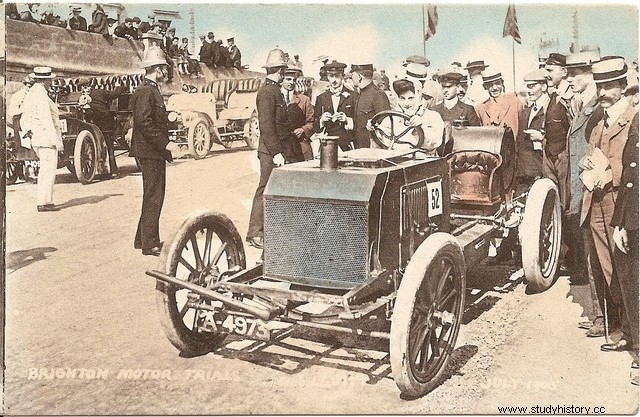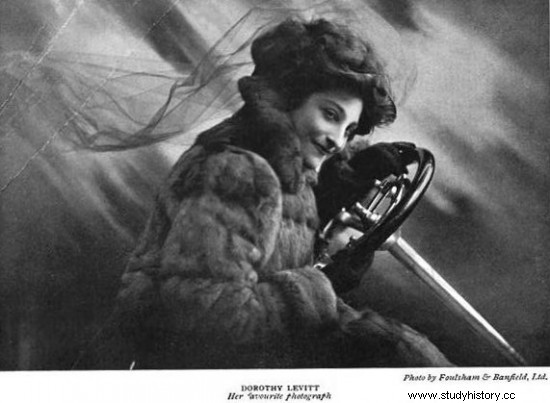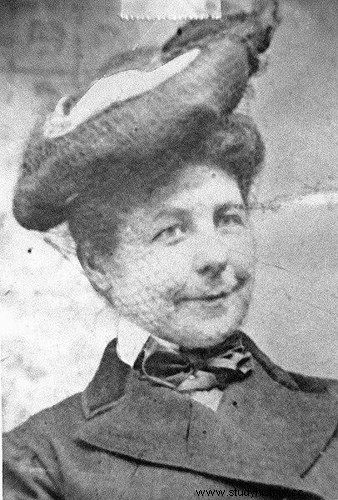Either because throughout history women have had to prove their worth in many disciplines in which men, just because they were men, were already considered better, or because they were women, traditionally They have been given the sanbenito of driving worse than men. And although today there is nothing special about driving, beyond passing some tests that allow you to do it legally and that have nothing to do with knowing how to drive, the motor world is still a field in which women hardly have any relevance. But we would be wrong to think that they have had little or nothing to do with the history of the automobile. We have some examples in Louise Sarazin In 1888, after the death of her husband Edouard Sazarin, she took the reins of the company to produce Daimler engines in France; after Adam Opel's death in 1895, his wife Sophie Opel and her children turned the sewing machine and bicycle factory into the seed of what is now the German car company Opel; the Duchess of Uzès she was the first woman to receive a driver's license and, also, the first to be fined for speeding (in 1897 she was driving through Paris at 13 km / h when the maximum speed was 12); Camille du Gast she became the first professional racing driver in 1901; the Italian Maria Teresa de Filippis she was the first woman to race in Formula 1 in 1958; the French Michèle Mouton and her Italian co-pilot Fabrizia Pons they were the first women to win a World Rally Championship event (San Remo, 1981)…

Dorothy Levitt driving a Napier (1905)
A particular case, due to the different and varied contributions that she made in the automotive world, is that of the Englishwoman Dorothy Elizabeth Levitt . Dorothy was passionate about speed, whether on land, sea or air. In fact, she was an accomplished Amazon; she was the first woman to win an automobile race, in addition to establishing in 1906 the first female speed record at 146.25 km / h; in 1903 she won several powerboat races and set the first world speed record on water by reaching 31 km/h; Although it is not known if she finally got her license, there are records from 1909 that place her at an aviation school in France; She was also a motoring writer and journalist… and, contrary to what happens to many men and women, she also understood mechanics.

The English press called her The fastest girl on Earth (The fastest girl in the world). Still, she too had to pay a price for her womanhood. In 1909 she published a book whose title left little room for doubt about its content:« The Woman and the Car:A chatty little handbook for all women who motor or who want to motor » (The woman and the car:a small manual for all women who compete in motorsports or wish to do so). Among the many recommendations she gave for female drivers was to "carry a small hand mirror in a convenient place so you can pick it up and see behind you when driving in traffic «; Unfortunately, many interpreted that idea as responding to female coquetry and that it contributed nothing to driving. It would take a few years for car manufacturers to incorporate them as standard... she had invented the rear-view mirror . In her book, she also recommended that women traveling alone carry a weapon.

Mary Anderson
And I will close this short tour of the automotive world with the American Mary Anderson . After a visit to New York City in the winter of 1902, and seeing the difficulties drivers had on rainy days, he hired a designer to materialize his idea:a manually operated device from inside the vehicle that would keep windshield clean and clear. In 1903 she was granted a patent for that first windshield wiper her for 17 years. Unfortunately, no one financed the production of her invention, nor did anyone buy the rights to exploit it. By strange coincidences of life (?), Shortly after her patent expired, car manufacturers incorporated windshield wipers based on Mary's model as standard.
Source and images:Engine pioneers
